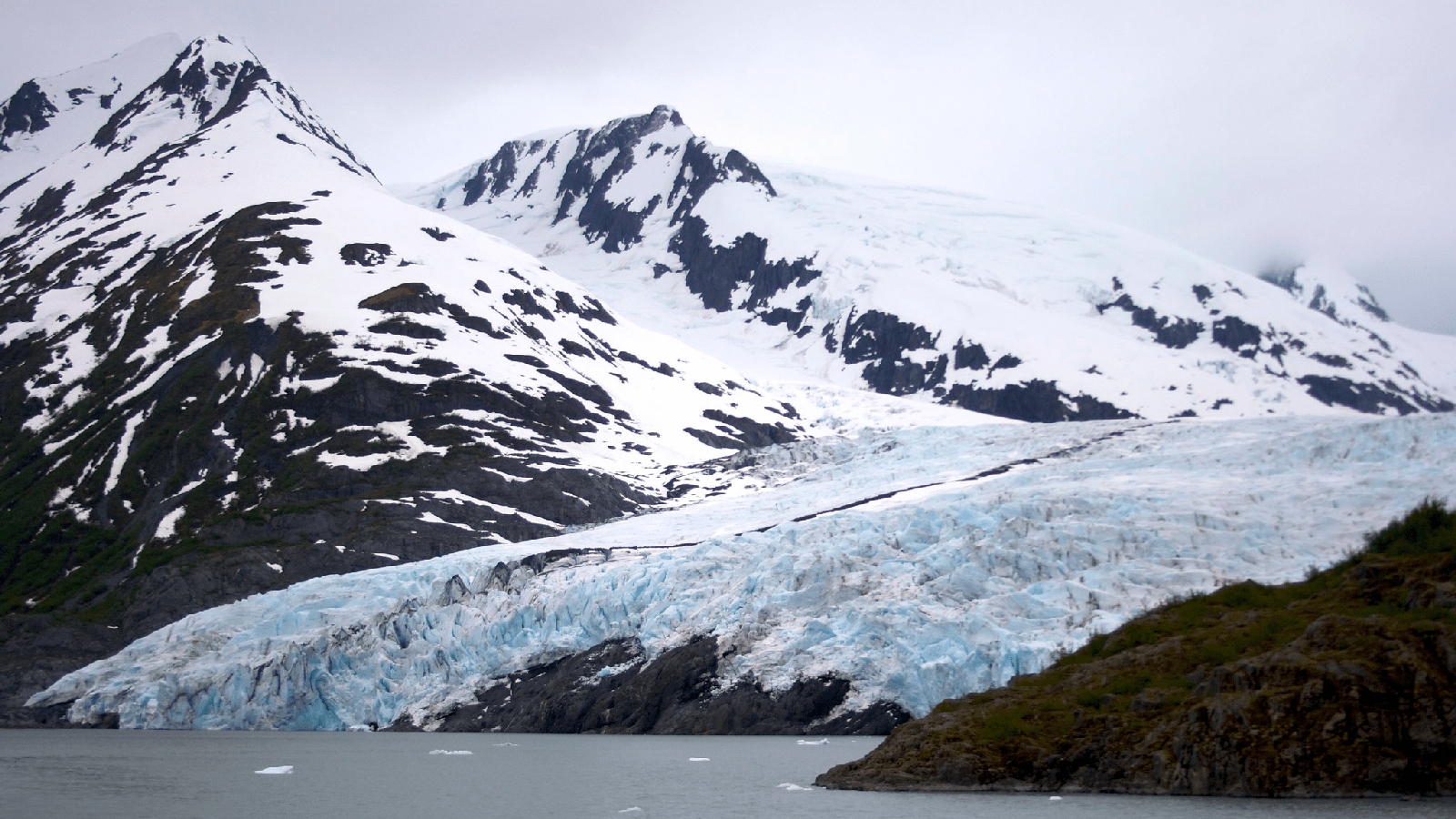By 2100, researchers have found, an area of glaciers somewhere between the size of Iowa and New Mexico (or even a bit larger) will melt, leaving new ecosystems — terrestrial, marine, and freshwater — behind. But the final toll will depend on how much the world pollutes in the decades to come.
Currently, about 10% of the land on Earth is covered in glaciers, but by the year 2100, an enormous number of these glaciers will melt, leaving behind novel ecosystems where there were previously glaciers. In a 2023 Nature article, “Future emergence of new ecosystems caused by glacial retreat,” scientists tallied up just how large an area of glaciers could melt by the turn of the century.
The authors wanted to study the scale of the issue, writing that shrinking glaciers and the development of postglacial ecosystems due to climate change are “some of the fastest ongoing ecosystem shifts.” These shifts come with significant and cascading consequences, both ecologically and in terms of the impact on society as a whole.
The Earth has about 210,000 glaciers, in addition to two massive ice sheets, which are located in Greenland and Antarctica. The glaciers alone (not including the continent-sized ice sheets) totaled around 665,000 square kilometers (more than 256,000 square miles) in 2020.
This wouldn’t be the first time massive glaciers melted on Earth. The authors wrote that when the Little Ice Age ended in the mid-19th century, massive areas of land transitioned from glacial landscapes to a variety of ecosystems in areas around the world.
When glaciers melt and leave behind new ecosystems, these areas can provide an important refuge to cold-adapted species that have adapted to living in extreme environments. However, the researchers noted that conditions in these areas can vary considerably, from mild to extreme, with some suitable for species that thrive in the cold, while others may be better for other species. Even though these new habitats can provide a home for species, the authors emphasize that the most important part is doing what we can now to save the glaciers we have and prevent them from melting.
Glaciers are a harsh place to live, but polar bears, penguins, birds, fish, and more, live in and under them, and these species are threatened by glacier retreat. Sophie Cauvy-Fraunie, a hydroecologist with INRAE, France’s National Research Institute for Agriculture, Food and Environment, is one of the authors of the Nature paper. She points to the influence retreating glaciers will have on entire ecosystems.
“This indicates that we are losing species, specifically on glaciers … at a global scale, we are going to have less and less glaciers, and we are going to lose species adapted to glaciers,” Cauvy-Fraunie said.
Jean-Christophe Clément, a biogeochemist in ecology at Savoie University in France, is one of the authors of the Nature paper. He says, “As they retreat, new ecosystems emerge, new lands and these are areas that could be interesting for existing species that look for space and ecological niches, and so it could become one of their last niches in the future.”
Reducing carbon emissions can save half the world’s glaciers
It challenging to protect imperiled glaciers since fewer than half are located in areas with land protections. But with climate change warming the entire globe, even protected area boundaries can only do so much
The year 2025 is the United Nations International Year of Glaciers’ Preservation and the Global Biodiversity Framework, emphasizing the importance of acting now to reduce carbon emissions to save the glaciers. “We need to protect them,” Cauvy-Fraunie said, “instead of in 50 years, now or next year.”
“If we act now in terms of carbon reduction emissions, we would still be able to save 50% of our glaciers in the world,” Clément said.
Source link


